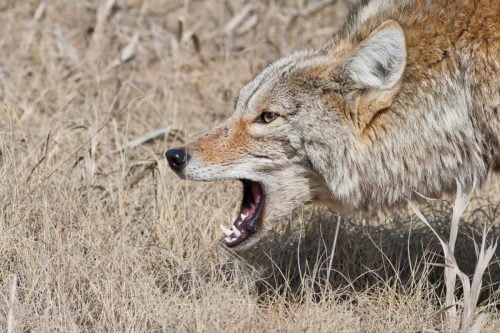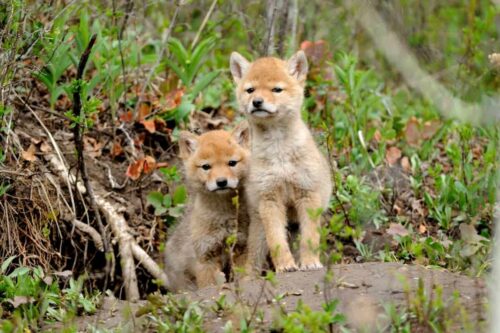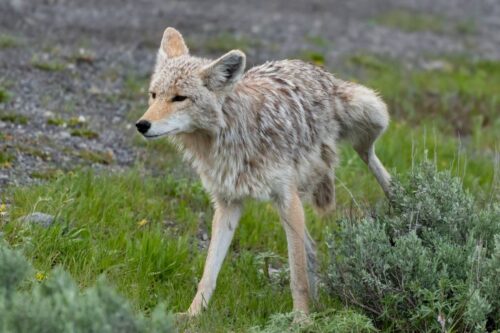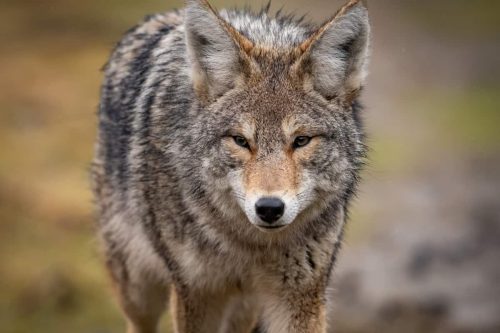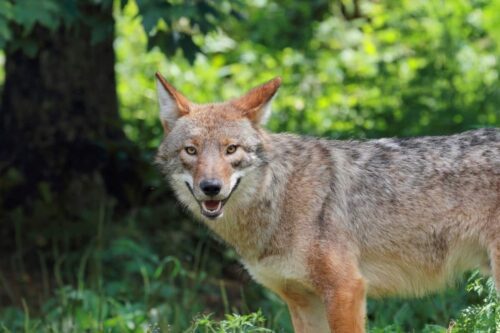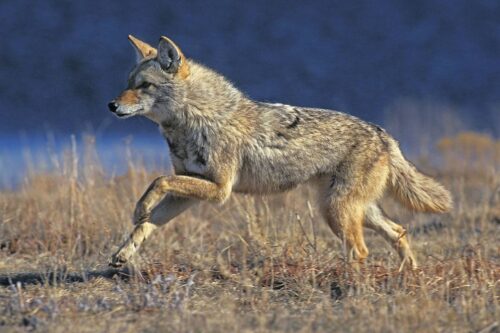Coyotes In New Jersey: Do They Exist In The State?
Coyotes in new jersey or Eastern coyotes have not been existing in the state for a very long time. It has hardly been 80 years since these species were spotted in bulk in the state. Now, you can witness them in every town and municipality of the state. These wild dogs play a very vital role in maintaining the ecology of the state since the extinction of the gray wolves from the state.
Despite the very abrupt increase in the population of coyotes in the state, they rarely make any damaging acts against human beings. They are generally wary of human beings’ presence anywhere. In this article, we are going to discuss the presence of the coyote in New Jersey in detail to clear all your confusion about their presence and behavior in the state.

Contents
Historical Background of the Coyote in New Jersey
The presence of coyotes in New Jersey is a relatively recent phenomenon and can be traced back to the mid-20th century. Previously, they could only be found in the prairies and the deserts of Western America. They have made their active presence in the state after the large scale landscape alterations and the elimination of the wolves across the country. It is believed that the eastern coyotes have mainly originated from the Great Lakes region. Genetic research has proved that these coyotes are a hybrid of grey wolves, domestic dogs, eastern wolves, and western coyotes.
The first confirmed sightings of coyotes in New Jersey occurred in the late 1940s and early 1950s in Cape May County. The expansion of coyote populations was facilitated by various factors, including changes in land use patterns, deforestation, and the absence of large predators in the region. It is extremely difficult to estimate the actual size of their population but these wild dogs are available in almost all the counties of the state. According to the report of the Fish and the wildlife department, eastern coyotes in New Jersey are thousands in numbers and the population is continuously multiplying day by day. The population is mainly concentrated in the forested regions.
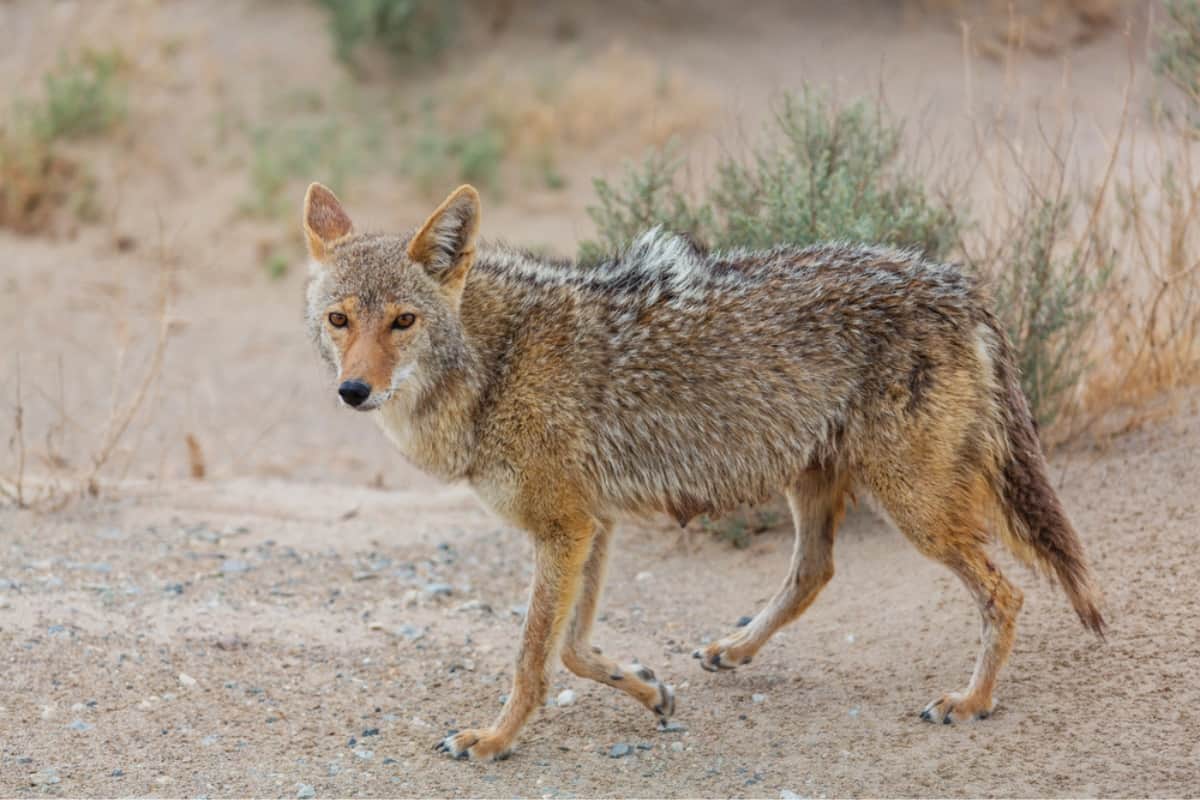
Over the decades, the coyote population in New Jersey continued to increase. They have been observed in both rural and urban areas, including parks, suburbs, and even densely populated cities. The state’s ample green spaces, such as forests and farmlands, provide suitable habitats for coyotes, while their ability to exploit human resources, such as garbage and pet food, further supports their survival in developed areas. The presence of coyotes in New Jersey has led to interactions with humans and other wildlife. Occasionally, conflicts arise when coyotes prey on livestock, and pets, or come into close proximity to residential areas. However, overall, coyote attacks on humans are extremely rare, and the majority of encounters involve the animals avoiding human contact.
Also, Read Coyotes in New York to know about the coyotes in NY state.
Ecological Significance of Coyotes in New Jersey
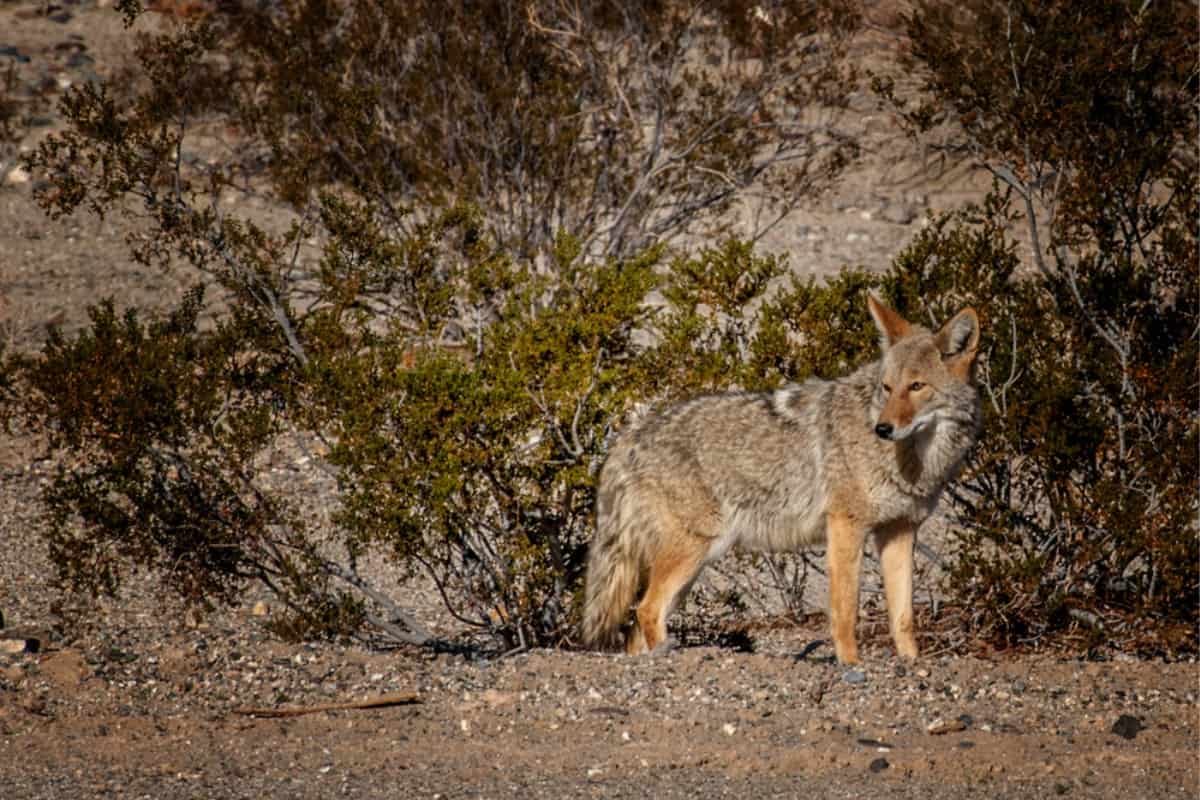
Coyotes have ecological significance in New Jersey as they play various roles in the ecosystem. The presence and the activities of coyotes can have both direct and indirect effects on the environment and other species. Here are some of the ecological roles of coyotes in New Jersey:
Predation: Coyotes are predators and help control populations of smaller mammals, such as rodents, rabbits, and small ungulates. By regulating these prey populations, coyotes can indirectly influence vegetation dynamics and prevent overgrazing in certain areas. They also hunt white-tailed deer in the spring and summer but hunting doesn’t have any reasonable effect on the population size of the white-tailed deer in the territories.
Competitive Interactions: Coyotes can influence the distribution and behavior of other carnivores, such as foxes and raccoons, through competition for resources, including food and territory. These are “mesopredators” and thrive in specific areas. If the population of these animals is not regulated by the coyotes then these animals could eat other animals like shorebirds, songbirds, and turtles on a very large scale and result in a very large drop in the population of these animals.
Carrion Consumption: Coyotes are effective scavengers and play a crucial role in cleaning up carrion (dead animals). They help prevent the spread of diseases and reduce the accumulation of decaying carcasses in the environment.
Seed Dispersal: As coyotes move across the landscape, they can inadvertently disperse seeds from consumed fruits and plants. This process aids in the dispersal of plant species and contributes to plant biodiversity.
Ecosystem Stability: Coyotes are considered keystone species in some ecosystems. Their presence helps maintain a balance in the food web and ecosystem dynamics. The removal of coyotes from an ecosystem can lead to shifts in prey populations, changes in vegetation structure, and potential cascading effects on other species.
Understanding and managing the ecological dynamics involving coyotes is crucial for maintaining healthy and balanced ecosystems in New Jersey, allowing for coexistence between humans and wildlife while minimizing conflicts.
Hunting and Trapping of Coyotes in NJ

Initially, coyotes had the furbearer status till the 1980s and this status was changed in 1997 when these animals were officially allowed to be hunted and trapped. Coyote is mainly hunted to get their pelt which has very good commercial significance. Hunting and trapping of coyotes in New Jersey are regulated by the New Jersey Division of Fish and Wildlife to manage populations and address any potential conflicts with humans or other wildlife. Here you can have an overview of the hunting and trapping regulations for coyotes in New Jersey:
Hunting Season: Coyotes can be hunted in New Jersey during designated hunting seasons. The hunting season dates, bag limits, and specific regulations are determined annually and can vary from year to year. It is important for hunters to consult the NJDFW’s official regulations or website for the most up-to-date information.
Generally, they have three hunting seasons. The general season of hunting usually starts from the early November and ends in mid-march. There is a special permit season that runs from the start of the January and ends in the mid of March. There is also a bow-late hunting season which starts from the late date of September ad ends in the early November.
Hunting Methods: Hunters must follow the specific hunting methods and equipment regulations outlined by the NJDFW. This typically includes the use of firearms and archery equipment during established hunting seasons. The use of dogs for hunting coyotes is not permitted. However, the predators’ call and decoys are fully allowed throughout these seasons. There is no bag limit in all of these seasons.
Trapping Regulations: Trapping of coyotes in New Jersey is allowed under specific regulations set by the NJDFW. Trapping methods must adhere to the rules and requirements specified in the state’s trapping regulations, including the types of traps, trap sizes, and trapping seasons. It is essential for trappers to be knowledgeable about these regulations to ensure legal and humane trapping practices.
Permits and Licenses: To hunt or trap coyotes in New Jersey, individuals must possess the appropriate hunting or trapping license issued by the NJDFW. Licenses can be obtained through the NJDFW website or authorized licensing agents. If you are licensed hunters then you can also harvest the coyotes if you have an incident encounter with these wild animals especially during the turkey season.
It’s important to note that hunting and trapping regulations are subject to change, and it is the responsibility of hunters and trappers to stay informed about the current regulations and comply with them. The NJDFW provides detailed information on hunting and trapping regulations, as well as guidelines for responsible and ethical practices, to ensure the sustainable management of coyote populations in New Jersey.
Main Predators of Coyote in New Jersey
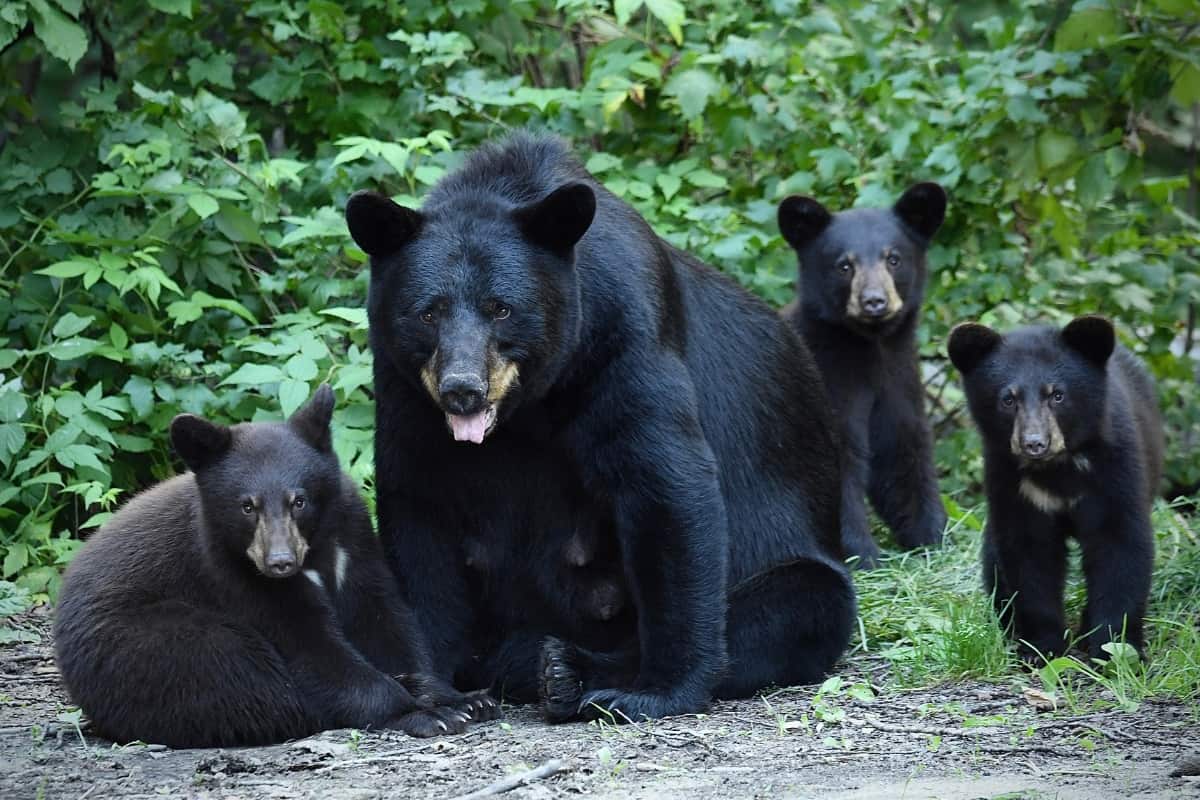
In New Jersey, adult coyotes generally have few natural predators due to their adaptability, territorial nature, and ability to defend themselves very well. However, there are some predators that may pose a threat to coyotes, particularly to their young or weakened individuals. Gray wolves are extremely rare in New Jersey, they are known to be one of the natural predators of coyotes. However, the presence of gray wolves in the state is highly unlikely, as they have been extirpated from the region for many years. Another natural predator is Black bears which are opportunistic omnivores and occasionally may prey on coyote pups. However, bear predation on coyotes is relatively uncommon and is more likely to occur when coyotes are in close proximity to bear habitats.
Mountain lions, also known as cougars or pumas, were historically present in New Jersey but were extirpated from the state by the late 1800s. Although there have been rare sightings, the presence of a stable mountain lion population in New Jersey is unlikely. However, in areas where mountain lions are present, they can pose a threat to coyotes. The absence or scarcity of natural predators does not mean that coyotes are free from other challenges and threats. Human activities, habitat loss, diseases, and vehicle collisions are significant factors that can impact coyote populations.
Coyote Management in NJ
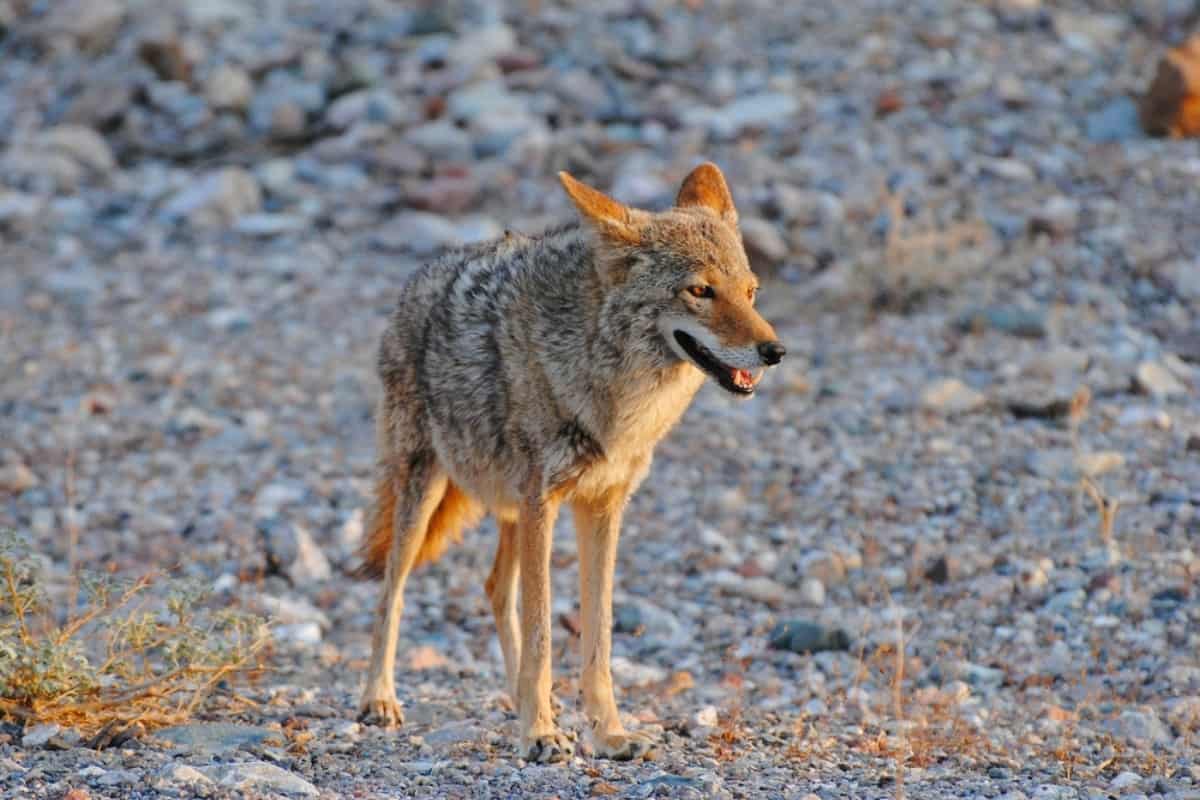
Coyote management in New Jersey aims to have a balance between maintaining healthy coyote populations and minimizing conflicts with humans and domestic animals. The New Jersey Division of Fish and Wildlife (NJDFW) is responsible for developing and implementing coyote management strategies. The NJDFW conducts research and monitoring programs to gather data on coyote populations, behavior, and distribution. This information helps inform management decisions and allows for a better understanding of coyote ecology in the state.
They also provide educational materials, workshops, and public outreach programs to raise awareness about coyotes and promote responsible coexistence. The NJDFW has established regulations for hunting and trapping coyotes during designated seasons. They can also provide guidance to residents who encounter coyote-related conflicts. This may include conducting site assessments, offering recommendations on deterrents and preventive measures, and addressing specific concerns through targeted management actions.
The NJDFW supports and promotes research on non-lethal methods and techniques for reducing coyote conflicts. This includes exploring and evaluating strategies such as aversive conditioning, hazing techniques, and modifying human behavior to discourage habituation and prevent conflicts. Coyote management in New Jersey is an ongoing process that considers scientific research, public input, and the goal of maintaining a healthy balance between coyotes and human activities. By implementing these strategies, the NJDFW aims to promote coexistence while addressing the conflicts and maintaining the ecological integrity of ecosystems.
Conclusion
The presence of coyotes in New Jersey has become a fascinating aspect of the state’s wildlife landscape. Coyotes are not native to the region, they have successfully adapted to the diverse habitats found in New Jersey, including urban and suburban areas. As a result, understanding and managing the interactions between humans and coyotes have become crucial for promoting coexistence and minimizing conflicts. It is also essential to recognize the ecological significance of coyotes in the state. They play roles as predators, scavengers, and seed dispersers, contributing to the balance and health of New Jersey’s ecosystems. By maintaining a respectful distance and allowing coyotes to fulfill their natural behaviors, we can appreciate their presence while minimizing any potential risks.

Izzy is an experienced ranch worker who has a passion for exploring nature and getting up close to wildlife. With her connections to various animal organizations, Izzy is well-versed in animal care and rehabilitation.

